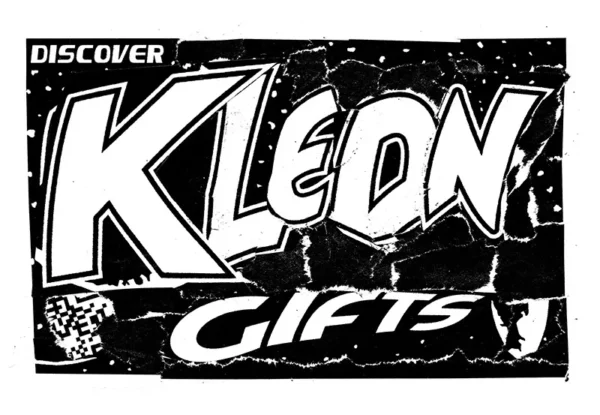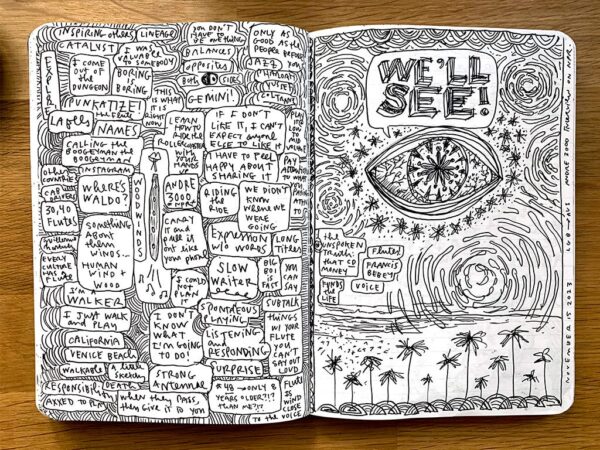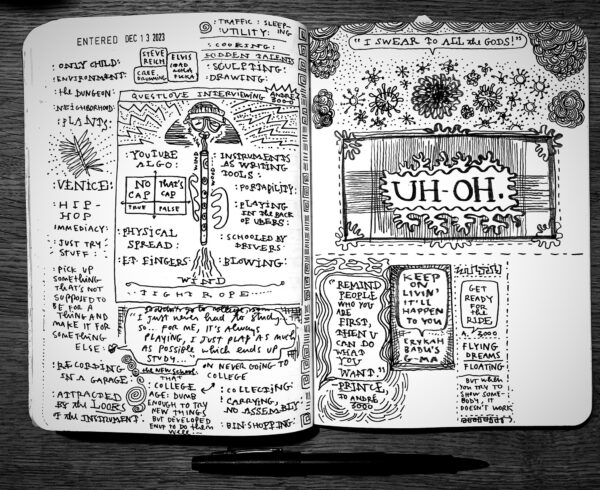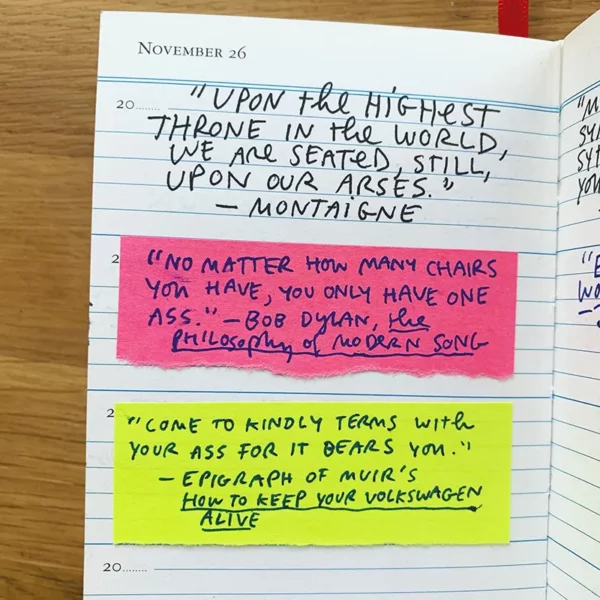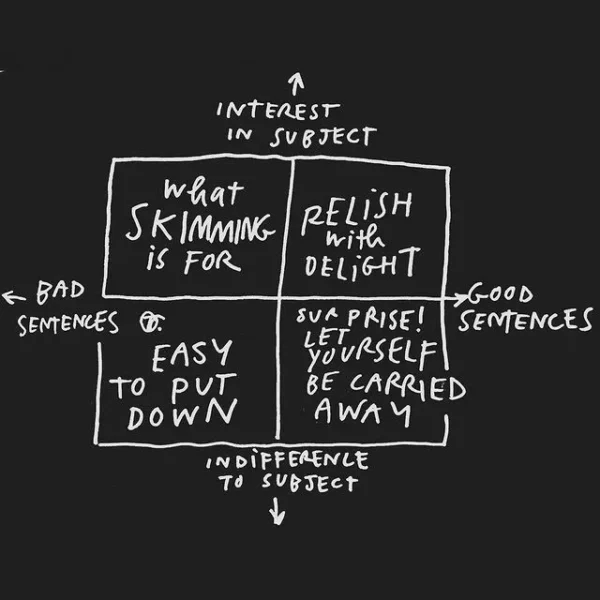
Yesterday’s newsletter about the discipline of reading begins:
I drew this diagram last week when I found myself reading a writer who seems to be interested in all the things I seem to be interested in, but they write about them in ways that drive me absolutely nuts. This kind of writer is frustrating because they are both annoying and valuable — I can’t ignore them completely because they have things that I want! These are the writers I skim. I skate over their text with a razor blade, scanning for good quotes and sources and links I can steal, scraping their footnotes and bibliographies. (A writer in this category can become a creative nemesis who motivates me to outdo them.)
You can read the rest here.
Filed under: reading
